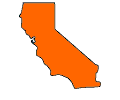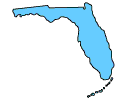Union VS Confederacy

| Union | Confederate | Border |

Maine
About 80,000 men from Maine served as sailors or soldiers in the American Civil War. Joshua Chamberlain was likely Maine's most famous Civil War combatant. Memorialized in the book Killer Angels, Chamberlain and his men held Little Round Top at the Battle of Gettysburg amidst furious assaults.

Vermont
Vermont sent about 34,000 soldiers to fight in the American Civil War, nearly 10% of the entire state population. Over 5,000 men from Vermont died in battle or of disease. The northernmost skirmish of the entire war occurred at St. Albans, Vermont.

New Hampshire
The state provided over 31,000 soldiers to the Union Army in the American Civil War.

Rhode Island
Rhode Island's industrial capacity contributed to the Union cause. Additionally, the state sent over 25,000 soldiers to fight for the Union Army. Ambrose Burnside, a Rhode Island native, would briefly serve as Commander of the Union Army before suffering a disastrous defeat to Confederate forces at Fredericksburg in 1862.

Connecticut
Connecticut sent over 53,000 soldiers to fight for the Union Army during the Civil War. The state was also a hotbed for the abolitionist movement.

Massachusetts
Massachusetts was an important Union state during the Civil War. It was a leading manufacturer of army supplies, weapons, and ammunition for Union forces and was a major center of the Abolitionist movement. Over 159,000 men from Massachusetts served in Union military units during the Civil War. Famous Civil War nurses Clara Barton and Dorothea Dix hailed from Massachusetts.

New Jersey
Over 88,000 soldiers from New Jersey served the Union. The Civil War gave rise to Camden and Paterson, New Jersey, among other cities in the state that would become industrial powerhouses from wartime manufacturing.

Pennsylvania
Pennsylvania provided over 360,000 soldiers to the Union military. It was also a major center of manufacturing and weapons production. Gettysburg, located in south central Pennsylvania, was the site of the largest battle in the history of the western hemisphere, and the only major battle to be waged in the North. The Union victory at Gettysburg in 1863 was the major turning point in the Civil War. Following the defeat at Gettysburg, Confederate forces were forced to retreat back to Virginia, never to invade the North again.

New York
New York provided over 400,000 to the Union cause, of which, at least half were under 30 years of age, and many of which, were foreign-born immigrants. New York state, and New York City in particularly was politically divided and known to be teeming with Confederate spies. New York City was also the site of the largest and deadliest riot in American history following a draft lottery in 1863.

Ohio
Ohio produced over 320,00 soldiers for the Union military, third in total number behind New York and Pennsylvania. In addition, Ohio supplied several of the most revered Union officers in the war such as Ulysses S. Grant and William T. Sherman.

Indiana
Indiana contributed approximately 210,000 soldiers to the Union cause. Indiana's vast farmlands were crucial in the monumental effort to feed the Union armies.

Illinois
Illinois contributed over 250,000 soldiers to the Union cause, ranking fourth behind New York, Pennsylvania and Ohio in terms of total soldiers. In addition, Illinois supplied enormous amounts of food for Union soldiers. Both Abraham Lincoln, president of the United States, and Ulysses S. Grant, eventual commander of the Union Army, had major ties to the state of Illinois.

Wisconsin
Wisconsin contributed over 91,000 soldiers to the Union cause, 12,000 of which were killed in battle or by disease.

Minnesota
Minnesota supplied about 22,000 soldiers to the Union Army.

Michigan
Approximately 90,000 men and boys from Michigan served in the Union military.

Kansas
Admitted into the Union in 1861, the state of Kansas was largely split between Confederate and Union sympathies. While over 20,000 soldiers from Kansas joined the Union cause, at least 1,000 served in Confederate forces as well. In 1863, Lawrence, Kansas was the site of a deadly raid led by Confederate "warlord" William Quantrill that resulted in the deaths of at least 183 people.

Iowa
Iowa contributed over 76,000 students to the Union cause.

Nevada
Although Nevada only sent 1,200 people to fight for the Union cause, it contributed over $400 million dollars worth of silver from the Comstock Lode, which helped to finance the war.

California
California's main contribution to the Union cause was to help finance the war with its large stores of gold. It also sent soldiers into the New Mexico territory to ensure the Confederates would not gain a stronghold there.

South Carolina
The state of the South Carolina was the first state to secede from the Union on December 20, 1860. Ten other southern states would follow its lead and seceded within the next six months. The first shots of the war were fired at Fort Sumter, South Carolina on April 12, 1861. South Carolina supplied over 70,000 soldiers for the Confederate military. Like several other southern states at the time, South Carolina's slave population was larger than its free population.

North Carolina
The state of North Carolina provided over 155,000 soldiers to the Confederate cause. Although few major battles occurred in the state, Wilmington was a crucial port that remained open long after most had been blockaded by Union naval forces. North Carolina seceded on May 20, 1861, making it one of the final states to secede. While secession enjoyed near universal support along the North Carolina coast and in its piedmont, the idea was much less popular in the state's western regions.

Tennessee
On June 8, 1861, Tennessee became the last state to secede from the Union. Incidentally it would become the first state to be re-admitted to the Union during Reconstruction. While middle and western Tennessee firmly supported secession, eastern Tennessee opposed it and even attempted to secede from Tennessee. Most of the 30,000-40,000 Tennessee soldiers who fought for the UNION army were recruited from eastern Tennessee. The majority of the approximately 120,000 Tennesseans who fought for the Confederacy were from the western two-thirds of the state.
During the Civil War, only Virginia experienced more battles than Tennessee. Major Union victories such as those at Forts Henry and Donelson as well as at Shiloh Church occurred in the Volunteer state. Other major battles such as those at Stones River and Chattanooga also occurred in Tennessee.

Florida
Florida was the third state to secede from the Union and join the Confederate States of America. Although very few battles occurred in Florida, it contributed to the Confederate cause by providing vast quantities of food to the military.

Georgia
Georgia seceded from the Union on January 19, 1861. Georgia was a key Confederate state, sending over 100,000 soldiers into battle. While the majority of the state supported secession, portions of Northern Georgia opposed secession. These regions sent at least 5,000 soldiers to fight in the Union ranks. The 1863 Battle of Chickamauga, in northern Georgia, was the second deadliest battle in the entire Civil War and served as the last Confederate victory in the war's western theater. Nearly 35,000 total casualties between the Union and Confederate armies were recorded. In 1864, Union general William T. Sherman, "burned" a path from Atlanta to Savannah, in what came to be known as Sherman\'s March to the Sea. Sherman's rampage was the setting for Margaret Mitchell's Gone with the Wind, one of the most popular novels of all time.

Virginia
Virginia seceded from the Union on April 17, 1861. It was a major prize for the Confederacy and upon its entry to the Confederate States of America, the capital of the Confederacy was moved from Montgomery, Alabama, to Richmond, Virginia. Over 155,000 Virginia fought for the Confederacy in the Civil War. Virginians in the state's western counties, however, opposed secession and seceded from Virginia. On January 1, 1863, West Virginia was formed and admitted to the Union.
Upon the secession of Virginia, the Confederacy gained its best military leaders such as Robert E. Lee, Stonewall Jackson, and Jeb Stuart among others. Because of its proximity to the Union capital, more battles were fought in Virginia than in any other state. The war officially ended on April 9, 1865, when Confederate forces surrendered at Appomattox Courthouse, Virginia.

Alabama
Alabama seceded from the Union on January 11, 1861. The original capital of the Confederacy was located in Montgomery, Alabama before it was moved to Richmond, Virginia, after that state joined the Confederacy. Although most of Alabama thoroughly embraced secession, a small pockets of Union support existed in northern Alabama, which sent over 2,000 soldiers to fight in the Union army.
Alabama contributed approximately 120,000 soldiers to the Confederate military, about 25% of which were killed in battle or by disease. The state also provided food and horses.

Mississippi
Mississippi was the second state to secede from the Union on January 9, 1861. Mississippi's location on the river it was named for made it strategically important for both sides in the war. Only Mississippi and South Carolina had slave populations that exceeded its free population at the time of secession.
Vicksburg, Mississippi was one of the last Confederate strongholds on the Mississippi River. Besieged and bombarded by General Ulysses S. Grant over the course of several months, the city was forced to surrender on July 4, 1863. Combined with the Confederate defeat at Gettysburg the day before, the two Confederate losses represented the major turning point in the war that swung the momentum to the Union. Following the Union victory at Vicksburg, the Confederacy was cut in two parts and the Union controlled the all-important river. Because the ruined city surrendered on July 4th, residents of Vicksburg refused to celebrate the 4th of July until World War II.

Arkansas
rkansas seceded from the Union on May 6, 1861 and was an important source of soldiers and supplies for the Confederate military.
In February of 1862, Arkansas was the site of the Battle of Pea Ridge, the largest battle to have taken place during the Civil War in Arkansas. In the battle, the larger Confederate force was soundly defeated by Union armies under the command of Samuel Curtis. The Union victory resulted in its near complete control of northern Arkansas and Missouri.

Texas
Texas seceded from the Union on February 1, 1861 after it replaced its governor, Sam Houston, who refused to support secession. Although no major battles occurred in Texas, it supplied the Confederate army with over 70,000 soldiers. A small minority of Texans opposed secession to the point of joining the Union army. Nearly 2,000 Texans fought on the Union side.

Louisiana
Louisiana seceded from the Union on January 26, 1861. New Orleans, which was the largest city in the entire South, was a strategically vital city, located along the Mississippi River and situated close to the Gulf of Mexico. Union forces occupied New Orleans early in the war on April 25, 1862, and declared the city, and surrounding areas under Federal control, as a state within the Union.
Louisiana was the site of several important naval battles such as those at Fort Jackson, Fort St. Phillip, and Fort Hudson. The capture of Fort Hudson, five days after the fall of Vicksburg, resulted in Union forces acquiring total and complete control over the Mississippi River.

Maryland
Maryland was one of five border states during the Civil War. A border state was one that remained in the Union, but kept its slaves through the duration of the war. Maryland was a key state for the Union. Losing it to the Confederacy would result in Washington being completely surrounded by enemy land.
Marylanders were divided in their attitudes about secession. Citizens from Baltimore and eastern portions of Maryland supported secession, while those in the western portions of Maryland largely supported the Union. 85,000 total Marylanders fought in the Civil War, mostly on the Union side.
The single bloodiest one-day battle of the entire war was fought at Sharpsburg, Maryland on September 17, 1862, in what came to be known as the Battle of Antietam Creek. In the horrific battle, Confederate forces under Robert E. Lee were driven back to Virginia, preventing an invasion of the North. Lee believed Maryland was being held in the Union against its will and that his army would "swell" with new soldiers from Maryland eager to fight for his cause. Lee\'s prediction, however, was flawed, as most Marylanders from that part of the state mistrusted the Confederates. Following the battle, President Lincoln issued the landmark Emancipation Proclamation, freeing all slaves in "enemy territory" as of January 1, 1863.

Delaware
Delaware was a border state during the Civil War. A border state remained in the Union during the Civil War, but kept its slaves. Most citizens from Delaware supported the Union during the Civil War and more than 90% of the state's slave population was freed by slaveowners prior to the war.

Missouri
Missouri was a border state during the Civil War. A border state remained in the Union during the Civil War, but kept its slaves. The state of Missouri sent 140,000 soldiers to fight in the Civil War, 110,000 of which fought for the Union, and 30,000 of which fought for the Confederacy. Missouri was divided in its sentiments toward secession and actually had two functioning governments, one representing each side.
Missouri was the staging ground for bushwhackers, a group of Confederate "guerrilla" fighters who traversed the state attacking Union supporters. Jawhawkers were the counterparts to Bushwackers. These fighters, mainly from neighboring Kansas, attacked those who supported secession in Kansas and Missouri.

Kentucky
"I hope to have God on my side, but I must have Kentucky," were the words spoken by Abraham Lincoln in 1861 in reference to the Bluegrass State, a key border state during the Civil War. Kentucky was the birthplace of both presidents, Abraham Lincoln and Jefferson Davis as well as the birthplace of First Lady Mary Todd Lincoln.
Kentuckians were divided in their sentiments toward secession and the state attempted to remain neutral at the outbreak of war. By 1861, a provisional Confederate government had been established, making Kentucky one of several Border states to have two functioning governments, each supporting one side of the conflict. This "provisional" Kentucky was admitted to the Confederacy on December 10, 1861, though it was quickly rendered obsolete as Kentucky fell completely into Union hands by 1862.

West Virginia
In 1861, the citizens in the western counties of Virginia that opposed the secession of Virginia from the Union created "the Restored Government of Virginia" as part of the Wheeling Convention. The goal for the convention was to create a new state, thereby seceding from Virginia. Congress approved statehood in December of 1862 under the condition that the new state would abolish slavery. As part of the new state's constitution, slavery was set for abolition on February 3, 1865. Thus, West Virginia was born as a border state. It officially became a state on June 20, 1863. It was the only state granted statehood during the Civil War.